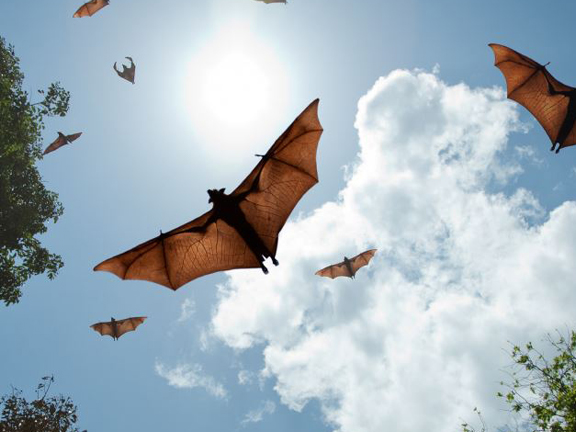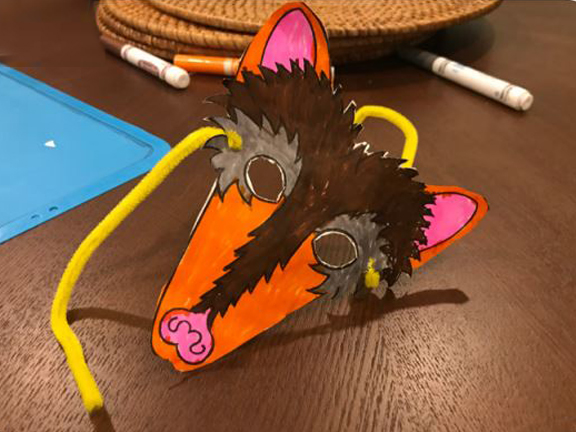Pollinators: Bats
About the Activity
Explore the role bats play in the fascinating process of pollination.
You probably don’t think about bats as pollinators. It’s true! Design a bat mask as you learn about the different types of bats and how these flying mammals take part in pollination and keep their ecosystem healthy.

Materials
These simple materials will get you started.
Activity Steps
Follow these simple steps to create your bat mask.
Before you start the activity, think about these amazing facts: Bats are the only mammals that can fly. There are more than 1,300 species of bats. Bats are pollinators, too. How? Bats feed on bugs, fruit, frogs and fish. But they also like to slurp up nectar from flowers. They use their long snouts and tongues to dip in flowers while hovering. During the process, pollen sticks to their fur, and bats transfer it to other flowers.
Bats are essential to keeping our ecosystem healthy. Farmers and ranchers appreciate the work of bats when they eat pesky insects like crop damaging moths and mosquitoes. It saves them thousands of dollars on pesticides, which aren’t healthy to spray.
Color your bat mask. Bats are typically brown or black in color, but may have grey, red, white or orange fur.
Cut out your mask.
When it comes to a bat’s wings, think of them as more like hands with four long fingers and a thumb that stretch with skin. The skin is called its wing membrane. A bat has two claws as feet.
 Did you know?
Did you know?Bats have about one baby a year. Baby bats are culled pups.
Bats live in colonies in places like caves, hollowed trees, barn rafters, or abandoned buildings.
Cut out the eyes.
Bats communicate with each other by clicking their tongues.
Poke holes under the ears using a pen.
Bats roost, or perch, upside-down because, unlike birds, bats cannot launch their bodies into the air from the ground, because their wings don’t produce enough lift to take off like a helicopter. Plus, hanging upside-down in groups is a great way for bats to hide from predators and danger.
Thread the pipe cleaners through the holes and make a knot at the end, on the colored side.
Test Your Knowledge
See how well you know bats now and find great activities to try next!
Reflection Questions
Questions for your kids and teens.
What would a world without bats be like?
How did bats come to get their scary reputation, and is it well-deserved?
What makes a bat a mammal?
Investigate and Explore
Take what you’ve learned to the next level to learn more and explore the possibilities.
Bats may seem scary, but they are shy, gentle creatures that generally avoid humans. The next time you see a bat on television or in the wild, think about this: There are only three kinds of vampire bats. They live in Central and South America and the Amazon. Some drink blood from sleeping or wounded animals such as cattle or horses. The Amazon is the only place where bats have drunk human blood.
The next time you see a bat, watch its flight pattern. To navigate, bats use a process called echolocation. They produce high-pitched sounds from their larynx, and also from their nostrils, that humans can’t hear. These high frequency sound waves bounce off things, which alerts the bats to where they can find food, how to protect themselves from colliding with buildings, semi-trucks, wind turbines and predators.
Want to learn even more about bats?
Download the 4-H Bat Guide and get to know these fascinating creatures better.






